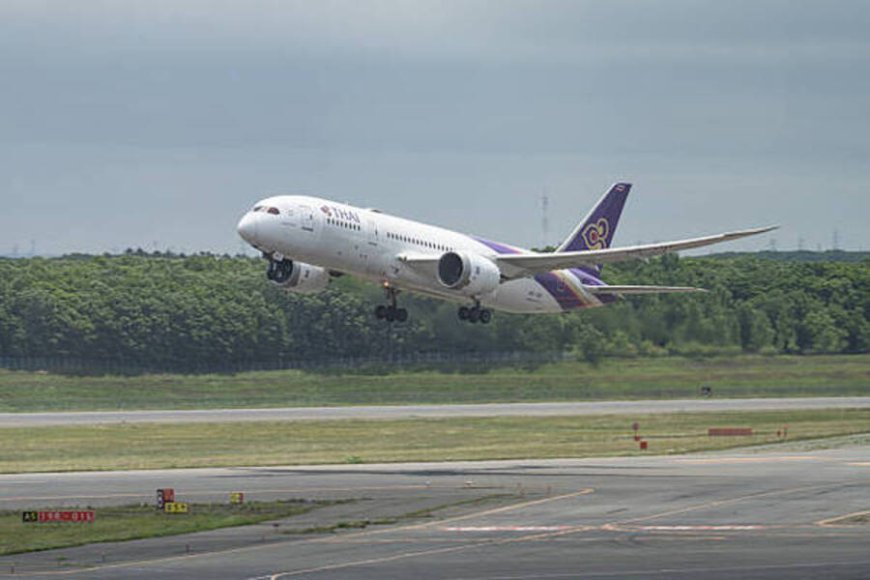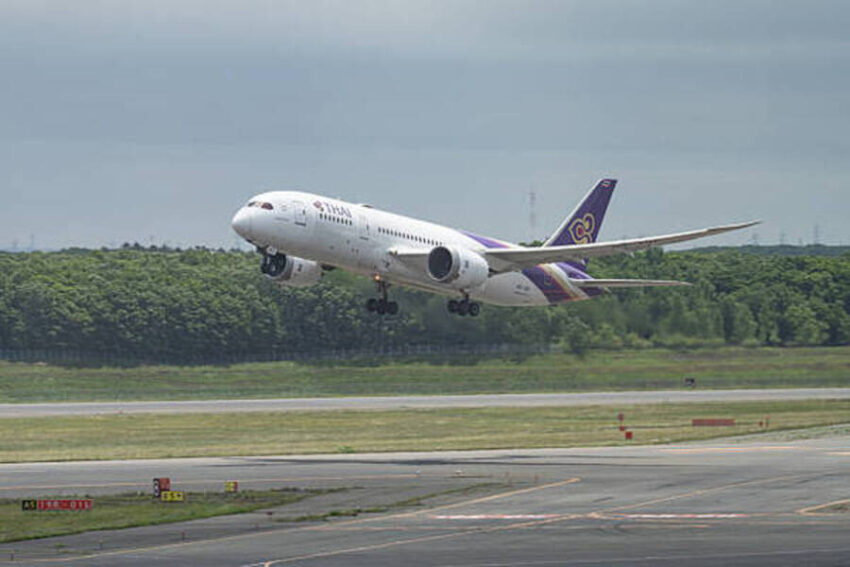Thailand Posts Strong Economic Signals With A Stunning Twelve Billion Baht Net Profit In The Second Quarter, Driven Primarily By Thai Airways’ Outstanding Recovery


Thailand’s aviation sector is witnessing a remarkable revival as Thai Airways leads the charge with a strong financial comeback, posting a net profit of over twelve billion baht in the second quarter of 2025. This impressive turnaround, driven by increased passenger numbers, lower fuel costs, and strategic operational improvements, has not only boosted the airline’s earnings but also propelled its market value to become one of the top stocks on the Stock Exchange of Thailand.
Thai Airways (THAI), Thailand’s flagship airline, is soaring back to financial health with a spectacular performance in the second quarter of 2025. The airline has reported a net profit of over 12 billion baht during this period, a remarkable turnaround fueled by lower jet fuel prices, growing passenger numbers, and improved operational efficiencies. This marks a significant milestone for the carrier, which has been steadily recovering from the challenges faced during the pandemic and restructuring phase.
Robust Revenue Growth Amid Rising Passenger Demand
For the second quarter ending June 2025, Thai Airways and its subsidiaries generated revenue totaling 44.83 billion baht, excluding any one-time financial adjustments. This figure represents a 1.9 percent increase compared to the same quarter in 2024. The revenue growth is closely tied to a notable 4.2 percent rise in passenger traffic year-over-year, with nearly four million travelers recorded.The airline boosted its flight frequencies on several key international routes that are seeing increased demand, including popular destinations such as Shanghai, Hong Kong, and Denpasar in Bali. This strategic capacity expansion has paid off, helping to elevate the average passenger load factor from 73.2% in Q2 2024 to 77% in the same quarter of 2025.
The improved load factor is a critical measure of how effectively the airline is filling seats on its flights. A rise to 77% indicates better utilization of available capacity, which directly contributes to enhanced revenue and profitability. These figures underscore Thai Airways’ ability to attract travelers in a recovering aviation market, where demand continues to grow as international travel rebounds.
Cost Reductions Boost Profit Margins
While revenue growth is important, Thai Airways’ strong earnings in Q2 2025 are also the result of disciplined cost management and favorable external factors. Operating expenses decreased by 9% to 34.65 billion baht. The primary driver behind this reduction was a significant drop in jet fuel prices compared to previous quarters. Fuel is one of the largest cost components for any airline, so lower fuel prices have a direct and powerful impact on the bottom line.
Despite expanding its flight schedule — which naturally increases fuel consumption — the airline managed to offset these costs through lower per-unit fuel prices and efficiencies in aircraft maintenance. Maintenance expenses were reduced thanks to improved scheduling and ongoing investments in fleet management, which have helped lower downtime and unexpected repairs.
This combination of lower costs and rising revenues contributed to a sharp increase in operating profit before finance charges. The amount increased sharply by 71.8%, reaching 10.18 billion baht in the second quarter, which corresponds to an operating margin (EBIT) of 22.7%. Such a margin is impressive in the highly competitive and cost-sensitive aviation industry, signaling a robust operational recovery.
Strong Net Profit Driven by One-Time Gains and Sound Financial Management
After deducting finance costs totaling 3.39 billion baht and incorporating one-time gains amounting to 5.35 billion baht, Thai Airways recorded a net profit of 12.13 billion baht for Q2 2025. These one-time gains mainly stemmed from the airline’s strategic decision to convert leases into outright ownership for four Boeing 777-300ER aircraft. This lease-to-own conversion has positively impacted the balance sheet and allowed the airline to capitalize on asset ownership benefits.
The jump in net profit is extraordinary when compared with the 314 million baht profit recorded in the same quarter of 2024. This enormous leap highlights the effectiveness of Thai Airways’ restructuring efforts and market strategy post-pandemic, as it navigates the complex recovery path facing the global aviation sector.
Half-Year Performance Reflects Sustained Growth
Looking at the broader picture, the first half of 2025 also showcases a strong financial recovery. In the first half of the year, Thai Airways generated revenue totaling ninety-six billion four hundred fifty million baht, reflecting a 7.2 percent increase over the corresponding period of the previous year. Net profit during this period surged by an astonishing 702%, reaching 21.97 billion baht. These figures indicate that the airline is not just experiencing a short-term rebound but is on a sustainable growth trajectory.
Over the first half of the year, the airline carried 8.3 million passengers, while the average seat occupancy rate increased to 80.2%. This increase in utilization is a positive sign of growing customer confidence and effective route management by the airline.
Successful Return to the Stock Exchange
Thai Airways’ impressive financial turnaround aligns with its successful relisting on the Stock Exchange of Thailand (SET) on August 4, 2025. The airline’s relisting marked a key milestone after an extended period of rehabilitation and restructuring following the severe disruptions caused by the COVID-19 pandemic. The relisting was widely anticipated by investors who viewed it as a sign of renewed confidence in the carrier’s future prospects.
During the first four days of trading, Thai Airways shares experienced robust activity with an average daily turnover of 4.4 billion baht. By the close of trading on August 7, the stock price reached 13.40 baht, marking an increase of 27.6% from its initial price at relisting. This impressive rise elevated Thai Airways’ market capitalization to 379.26 billion baht, positioning it as the 11th highest valued company on the Stock Exchange of Thailand (SET).
Strategic Outlook and Future Prospects
Thai Airways’ resurgence is the result of a combination of factors, including effective cost control, strategic expansion of flight frequencies on key routes, and favorable market conditions such as lower fuel prices. The airline’s focus on improving operational efficiency while expanding its network is helping it regain its position as a major player in the regional aviation market.
Thailand’s aviation industry is rebounding strongly, with Thai Airways posting a remarkable twelve billion baht profit in Q2 2025. This financial success has elevated the airline’s market value, making it a leading stock on the Thai stock exchange.
Looking ahead, the airline plans to continue leveraging its strong brand presence and extensive network to capitalize on growing travel demand in Asia and beyond. The relisting on the stock exchange provides
Furthermore, Thai Airways is expected to benefit from increasing tourism flows to Thailand, driven by the country’s appeal as a top global travel destination. With a more favorable cost structure and growing passenger base, the airline appears well-positioned to sustain its profitability and expand its market share in the coming years.
The post Thailand Posts Strong Economic Signals With A Stunning Twelve Billion Baht Net Profit In The Second Quarter, Driven Primarily By Thai Airways’ Outstanding Recovery appeared first on Travel And Tour World.






